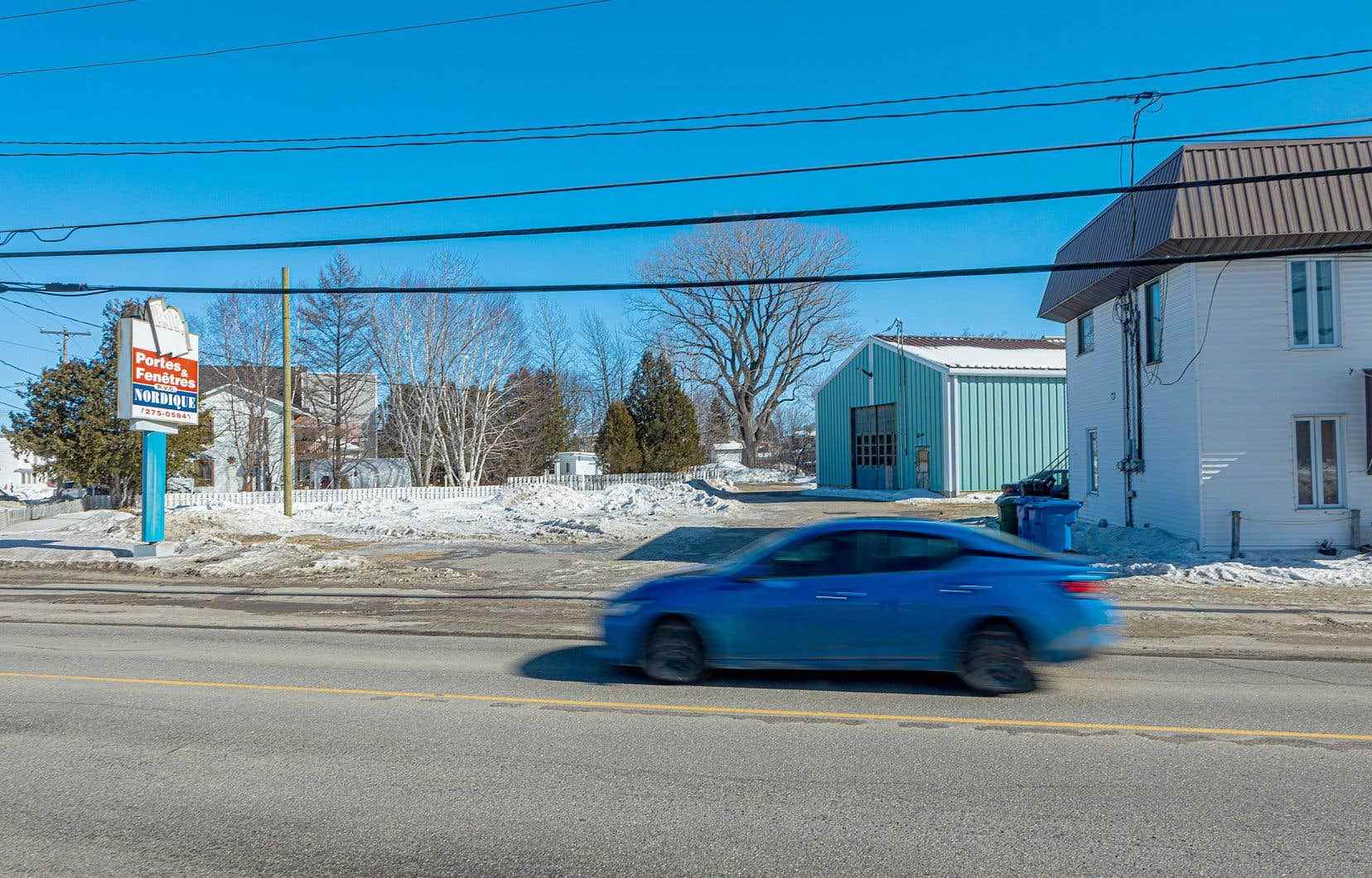Homelessness issues in downtown Roberval have gotten much worse in recent months. So much so that the City has seen fit to bring together all the stakeholders in the field to form a crisis unit.
“At the beginning of September, someone lit a fire in front of our library and, unfortunately, the facade was completely burnt down,” says Mayor Serge Bergeron.
In the evening, disorganized people wander along Saint-Joseph Boulevard in the city center. The City is receiving more and more complaints from fearful people, who say they no longer dare to walk in the area.
Formerly associated with urban centres, homelessness is increasingly present in regional towns. Roberval felt the first signs of this in the summer of 2021. A year later, their magnitude forced Mayor Bergeron to make a decision.
“I said to myself: “we have to do something”. This is how, on October 3, he brought together all the stakeholders “relating directly or indirectly to the problem of wandering”. The meeting led to the creation of a “crisis unit” bringing together mental health workers, elected officials and police officers.
fear of racism
Stakeholders estimate that just under 50 people are homeless in Roberval. The group is not homogeneous, but it includes many Atikamekw from the Obedjiwan reserve, explains the director of the Native Friendship Center, Mélanie Boivin. “There have always been some”, she says, but not of this “scale”.
Roberval may be nearly a five-hour drive from Obedjiwan, but it is the reference town for the Atikamekw community. “People come here for groceries or shopping and to receive health services. »
But “the pandemic has done its work”, continues Mme Bovine. “People consumed more. The dependencies are bigger, and they are more exposed to poverty. »
Since housing is lacking in Obedjiwan, some go to Roberval in the hope of finding a roof there. Not without difficulty. As reported The duty in March 2021, Indigenous people are often victims of racism when it comes to finding housing in the city.
In this context, stakeholders and the City wish to prevent homelessness from intensifying tensions between Aboriginal people and residents. “For me, it’s important not to make it a racial conflict,” explained Mayor Bergeron. “There are not only Aboriginal people [parmi les personnes en itinérance]. We have young adults who are struggling with serious mental health problems. »
Aggravation of the phenomenon
Beyond the Aboriginal reality, the aggravation of the phenomenon stems from a kind of conjunction of social factors, observe the workers.
The population really has difficulty finding housing in the region, notes Catherine Belley, acting assistant director of youth and addiction rehabilitation at the Integrated University Center for Health and Social Services (CIUSSS) in Saguenay–Lac-Saint-Jean.
“Rent prices have gone up and, given the shortage, landlords are more selective,” she says.
The pandemic has also lifted the veil on a once hidden form of homelessness, continues Catherine Belley. “There are people who had no address, lived with relatives, moved places, but were not on the street. However, due to the threat posed by the virus, those hosting relatives have become more reluctant to do so.
Accommodation resources have also had to limit their reception capacity due to sanitary measures, she notes. Finally, stakeholders report that the illicit drugs circulating are of poorer quality, which causes more damage.
Service holes in the evening and at night
The City especially lacks services at night, in particular beds to temporarily accommodate these people, maintains Serge Bergeron. However, even with new beds, the organizations risk running out of staff to fill all the time slots, specifies the elected official.
But Roberval is not without tools. “We have a street worker, a local intervention center, a community mental health organization, the mental health journey center, specific services for men in distress, explains the mayor. We still have a good range of services. »
In addition, in the wake of the Viens commission, the Government of Quebec has created resources to facilitate relations between police officers and Aboriginal people. Six mixed police/community worker intervention teams (EMIPIC) have been set up in Quebec, including one in Roberval.
In housing, Mishtik, a 24-unit project for Aboriginals, was funded by the Société d’habitation du Québec (SHQ) and is due to come out of the ground in the spring. But it is intended for families, while homelessness affects single people, says Mme Boivin who is also working on a shelter and temporary accommodation project.
The director of the Native Friendship Center also points to the revolving door syndrome in psychiatry at the Roberval hospital. “We don’t understand why these people are still on the street. We have brought them in repeatedly in the emergency services and they continually come out. »
Asked about this, the director of the CIUSSS mentions the addition, last year, of a homelessness liaison officer position at the regional level “who makes the link between the community, emergencies and the various services “. The challenge in many cases, adds Mme Belley is to “convince” people to come to existing services.
What is happening in Roberval is symptomatic of a more global phenomenon, said Mayor Bergeron. “The problem is provincial. It’s related to people’s mental health, addiction, post-pandemic factors. »
